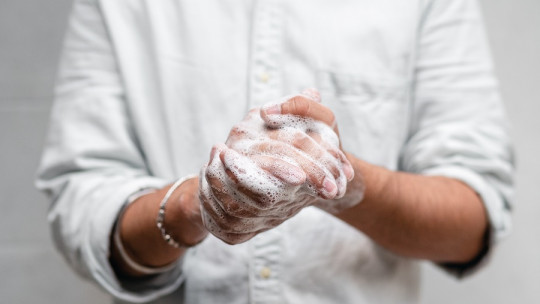We cannot deny that Consumerism increases considerably during the Christmas season. In fact, in the market there is an enormous variety of products offered that are exposed to public view, being the object of desire of thousands and thousands of consumers who pass in front of carefully assembled showcases overflowing with items.
However, although the average consumer has constant eye contact with these consumer products, they do not have the financial comforts necessary to purchase them. This can generate anxiety and frustration, in addition to fueling the need to own fashionable objects and products to differentiate yourself from other people.
Oniomania: shopping, one of the great modern pleasures
Getting carried away with the action of buying excessively, beyond one’s own material possibilities, is unsustainable and for many families it can lead to serious general discomfort due to the consequences it brings.
This abnormal acquisition of items is called compulsive buying and It is defined as a persistent, irresistible, assaulting purchase motivation that happens repetitively, its action is experienced as a pleasurable sensation. and reduce discomfort, but in the long run it can be a behavioral pattern that generates serious problems.
Currently, compulsive buying affects between 1.1% – 5.9% of the general population.
Women are more compulsive in their purchases
A recent study published in Global Conference on Business and Finance Proceedings (2015) concludes that among the subjects evaluated, Women show a more compulsive attitude when making unnecessary purchases and describe feeling more pleasant and intense emotions compared to men. In another case, Kraepelin stated the same conclusion, between 80% and 92% of the cases studied occur in women who are around 30 years of age.
It is concluded that women tend to make compulsive purchases in relation to clothing, shoes and accessories and the few men who suffer from this addiction are more likely to spend money on electronic devices and items arising from new technologies in general.
The psychological profile of a compulsive buyer
We are dealing with a psychological disorder, not a vice.
In the current DSM-IV (clinical diagnostic manual) This behavior is not described as a recognized disorder so, whoever suffers from it is relegated to the category of “Unspecified Impulse Control Disorder”
Among people who suffer from oniomania, a high degree of comorbidity is reported, so they often compulsive buyers meet criteria for other disorders specifically those related to mood, anxiety, substance abuse and there are even studies that indicate a notable link with eating disorders.
Classic studies on this topic reveal a certain hereditary tendency; McElroy and colleagues found that of 18 compulsive buyers, 17 had a family member with mood disorders, 11 with substance abuse, 3 with anxiety disorders, and 3 more who had compulsive buying.
The origins (causes) of oniomania
There are two possible origins that lead to developing compulsive behavior. On the one hand, one of the causes refers to the relationship between performing a repetitive behavior that generates satisfaction. That is, a person begins to carry out the behavior of buying repeatedly because brings you a strong dose of satisfaction and pleasure until it finally becomes a habit that ends in compulsion.
On the contrary, it is possible that it arises because the person does not feel capable of facing some aspect of their reality, or does not know how to deal with the personal problems that overwhelm them, so they seek to solve their shortcomings through excessive purchases. In this case, the compulsive behavior would be due to a kind of emotional escape route.
The 4 phases of compulsive buying
We observe the phases that govern all compulsive purchases:
1. Anticipation
Thoughts, impulses and concerns arise in relation to a specific product or the habit of buying.
2. Preparation
Decisions begin to be made about where the product will be purchased, how the payment will be made (normally bank cards are used), how the store will be reached or the means by which the product will be acquired (online, physical store…). In certain cases, additional information about the desired item is sought.
3. Purchase
They experience it as a frankly exciting and pleasant experience. For people with oniomania, the moment of making the purchase is an expected moment that makes them feel good.
4. Expense and disappointment
Once the purchase is made and the money is spent, a feeling of disappointment with oneself arises along with feelings of guilt, anger, resentment and the firm intention of not repeating the behavior.
Why do we buy compulsively?
If we wanted to cover all the answer possibilities offered by this question, I am sure that we would not have enough space, so we are going to focus only on the most common causes and those that most influence this compulsive behavior.
And after the purchase… what?
The compulsive buyer experiences, once the purchasing action has been carried out, strong feelings of guilt and anxiety which can even trigger depressive symptoms in response to excessive behavior and expenses.
However, these effects cannot be attributed solely to the fact of making irrational purchases, since the majority of people who display this behavior also present strong compulsive traits, which manifest themselves in the form of some behavioral, cognitive and/or physiological symptoms. In order to overcome these feelings of anguish and depressed mood, the person may resort to making new purchases, so the circle becomes increasingly narrower.
It is this dynamic of looping activities that makes compulsive buying something that is very difficult to disengage from. Among other things, because recognizing that you are addicted to something is a blow to our beliefs and ideas that can be explained by the theory of cognitive dissonance: the more we buy, the more we are forced to justify that habit by making more purchases. In this way, compulsive buyers have an increasingly narrow margin of maneuver, and the situation worsens because the lack of money is increasingly evident, which transforms oniomania into a problem in many areas of life.
Treatments for oniomania
There are different ways of approaching these cases. Sometimes, several types of treatment can be used simultaneously or in a chain.
1. Cognitive-Behavioral Therapy
Treatment with cognitive-behavioral therapy begins by expressing the need to introduce a change in the life of the person suffering from shopping obsession.
It is very important discover how the person conceives themselves and how they try to satisfy their needs as well as analyze what type of ideas govern your personality to begin to modify them. In psychological treatment from the cognitive-behavioral model, people with oniomania are also trained to manage their anxiety states, both when it comes to recognizing this emotion and in relation to modulating its influence on the body, preventing it from being expressed through harmful behaviors such as compulsive buying.
Great results have been observed through group therapies, where one’s own experience is shared with subjects who have the same problem.
2. Pharmacological treatment
Currently, the drug treatment (SSRI) used to treat obsessive-compulsive disorder has proven to be the most effective, since the premeditation associated with the act of purchasing could respond to an obsession and its physical behavior resembles that of a compulsive ritual. The only difference between a compulsive buyer and someone who suffers from obsessive-compulsive disorder (OCD) is that in the latter the behavior is completely involuntary from the beginning.
As mentioned, both treatments can be performed at the same time, offering better results.
5 final tips to be prepared for this obsession
These tips are applicable to any time of the year, but they can come in very handy during Christmas periods and during sales periods when it is easier for us to feel a greater need to purchase products and items.









